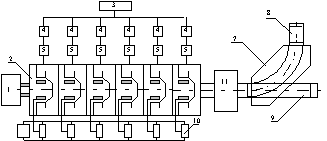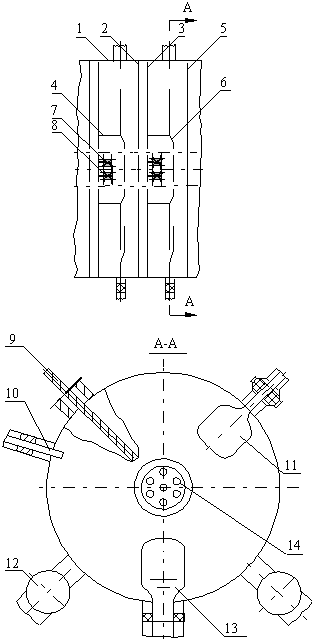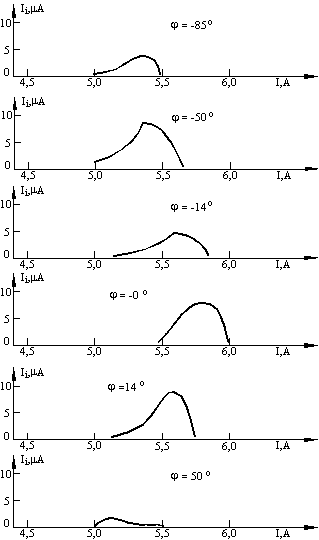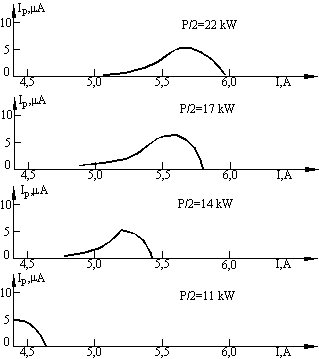This paper presents the results of experimental research
of energy variable proton linac, which consists of independently
driven one-gap accelerating cavities. Cavity design proposed by
authors seems to be optimal for high values of energy gain and
beam current. A multichanel accelerating structure allows to accelerate
several ion beams. Beam focusing is accomplished by means of electrostatic
quadruples with variable potential, which is chosen from the viewpoint
of maximum beam transit factor for each operation mode, determined
by output energy. The other energy variable accelerating structures
with operating frequency changing are also under consideration.
The modern stage of accelerator engineering development in Russia is characterized by a peculiar combination of the requirements to expansion function opportunities radiation installations and their efficiency increase with decrease of material inputs on their creation and exploitation. In the ion accelerators area to number of such problems it is possible to relate creation of complexes, capable to receive beams with any by given energy from a zero up to maximum and ensuring thus transfer to ions reasonably large (up to several tens percent) part of RF energy from a generator.
This problem not decided so far due to problems of practical realization. The last were connected mainly to absence of the constructive decisions enabling to supply high energy gain in a meter range (i.e. ions accelerators range), that is significant longitudinal sizes of resonators at a limited potential gradient, stipulated with breakdown significance on a small accelerating gap.
The accelerator block diagram of which is indicated on fig.1. By the authors was offered as the main accelerating element of installation to use a polyaxial resonator (PR). Ones formed from a known cylindrical resonator with wide aperture drift tube by its installation on the end face of a disk with a diameter close to size of a resonator cylindrical wall. On fig. 1 are entered following reviews: 1 - ions injector, 2 - PR, 3 - RF feed system specifying generator, 4 - phase shifters, 5 - RF amplifiers, 6 - electrodes of a electrostatic focusing system, 7 - magnetic analyzer, 8, 9 - ions beam collectors, 10 - variable resistance of a power supply system of the electrodes 6, 11 - beam slot-hole collimating system. Given scheme has basic character and does not exclude a opportunity of phase adjustment in a most specifying generator, or directly in accelerating cascades. As well as variant of discrete phase change at the expense of replacement wave cable with fixed electric length. The length determine the phases difference on the generator 3 output and each particular resonator.

The schematic drawing of a structure in two projections is shown on fig. 2. On a drawing are indicated: 1 - resonator cylindrical wall, forming a vacuum chamber, 2, 3 - resonator face wall, 4 - drift tube, 5 - disk, 6 - drift tube face cover, 7 - dielectric electrodes 8 holders of electrostatic focusing system, 9 - electrodes 8 potentials input, 10 - loop of a RF capacity level measurer, 11 - power input from a generator, 12 - pump system vacuum collector, 13 - frequency adjustment element, 14 - drift aperture. The drift tube cover 6 and disk 5 are replaceable, that permits by a way on selection of these elements with the various sizes to adjust resonant frequency of resonators in small limits, that it is convenient on stage of accelerator start. The focusing system electrodes fix on a plate with a opportunity them tuning on mandrils. The diametrical sizes of a drift tube internal cavity admit accommodation of a focusing system for several channels located on circles by some centimeters diameter. Accelerating structure pump carried out through cylindrical collectors, connected to nonoil pumps. Ones provided vacuum in a structure better then 310-6 Torr. Tuning is executed with help of the laser beam and mandrils.
Diameter of a sicumference channels centers circle in spent experiments makes 6 sm. The resonator loaded quality equals 700, coupling factor 2, own quality 2000. Arriving to the resonator power was defined as differences by the dropping and reflected waves power. The shunt resistance significance was determined by the power spectrum comparison of a simulating electron beam (instead of ions were injected electrons with energy 40 keV). Dependence based on the accelerated electrons energy maximum and appropriate entered power level in view of the previous changes allowed to estimate shunt resistance significance. Within the measurements accuracy limits of 10% it has made 80 kOm.
The proton acceleration in an energy adjustment mode
for the account of appropriate resonators phasing was executed
after preliminary selection of transportation optimum conditions
in a electrostatic quadruple lenses system. Thus in each
of quadruples one electrodes pair of opposite transportation
channel was ground and second was under positive or negative
potential.

At the power level in one resonator 40 kW the energy
gain in it reached up to 56 keV. On fig. 3, 4 experimental dependencies
of a current in magnet winds (power spectra analogue) are
submitted. Ones removed for various RF fields phases significance
in first and third resonators (in second - the RF power was
not entered). As well as for a various RF power level at
its division equally on the general accelerator cascade output
by means of phase shifter bridge scheme. As it is visible from
these drawings given regime of proton output energy smooth adjustment
is realized in complete volume.


The realization simultaneous phase and peak regulation provides the task opportunity of any change law of RF fields accelerating harmonic phase speed along system length. That it is necessary for particles acceleration in the high energy fields. It means that the accelerators on all energy (up to relative) can be executed on the basis of identical single gap resonators optimized under the form and sizes from a point of view of power walls losses minimization, that is efficiency increase. Besides fall away necessity of transition to higher frequencies. That is increase a ions capture factor at the expense of losses absence on transition sites. As well as simplifies RF system as a whole. Besides a new functional opportunity of acceleration in the same acceleration complex of a various type ions is opened. In particular, in a considered structure it is possible deuterons acceleration. For transition to heavier ions can be recommended PR with several disks installed on drift tube and external wall.
Use of a double gap resonators sequence in the kind
quarter wave vibrator with drift tube is represented reasonably
effective also. Thus the each resonator frequency is determined
by a situation relocatable short piston in the vibrator basis.
The ions flight time between backlashes can be adjusted in potential
of electrode, located in each tube.